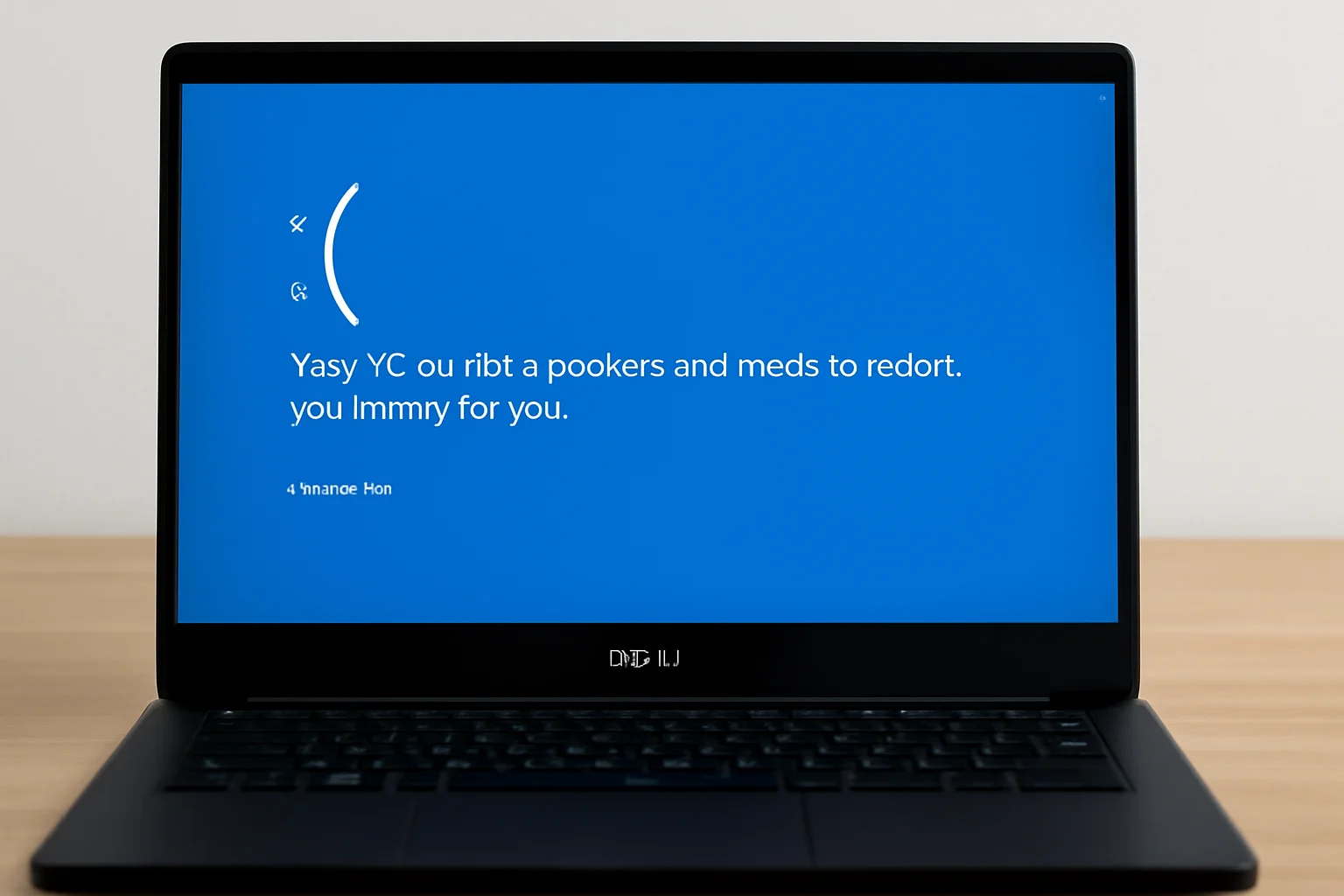I’ve had my fair share of frustrating moments with the blue screen on my Dell laptop. Whether it’s been after a Windows update or out of the blue with no warning, the experience can be a real headache.
I understand how stressful it can be when your laptop suddenly crashes, especially when you’re in the middle of something important. But don’t worry—I’ve been through it and know exactly how to handle it.
In this guide, I’ll walk you through the common causes and how to fix the Dell blue screen issue quickly and efficiently. Let’s get your laptop running smoothly again.
Table of Contents
Blue Screen of Death Dell Laptop – Helping Ryan
Ryan was in panic mode when his Dell laptop suddenly crashed with the dreaded blue screen of death. I saw him pacing and offered to help, setting up a hidden camera with audio to capture the moment.
I booted into Safe Mode, ran diagnostics, and fixed a driver issue causing the crash. Within minutes, his laptop was back to life. Ryan sighed in relief and said, “I thought it was dead!” A little tech support saved his day.
Understanding the Blue Screen of Death (BSoD) on Dell Laptops
The “Blue Screen of Death” (BSoD) is a dreaded screen that many Dell laptop users encounter. It can happen at any time, often when you’re least prepared for it. This screen usually signals a system crash due to software or hardware issues. For Dell laptops, the cause can range from outdated drivers to corrupted system files or even failing hardware.
Common Error Messages
- “Your PC ran into a problem and needs to restart.”
- “Stop Code: CRITICAL_PROCESS_DIED.”
- “Stop Code: SYSTEM_THREAD_EXCEPTION_NOT_HANDLED.”
The BSoD can severely impact your productivity. It disrupts work, forces a reboot, and may result in lost data if not handled correctly. But don’t worry. There are solutions.
How a Simple Update Caused a Dell Laptop Blue Screen After Update
I once faced a blue screen right after a routine Windows 10 update. At first, I couldn’t figure out what went wrong. The issue turned out to be an outdated driver that didn’t play well with the new update.
Solution:
- Step 1: I updated the faulty driver from Dell’s website.
- Step 2: After updating, I rebooted my laptop.
- Step 3: The blue screen issue was resolved.
Always ensure that your drivers are up to date, especially after an update.
Why Dell Laptops Show Blue Screen Errors on Windows 11
When I switched to Windows 11, I encountered the blue screen again. It turns out that BSoD on Windows 11 can be caused by compatibility issues or outdated drivers.
Common Causes:
- Compatibility issues: New software may not be fully compatible with Windows 11.
- Driver problems: Old or missing drivers can cause system crashes.
- System conflicts: Conflicting software or hardware can trigger BSoD.
Steps to Fix It:
- Step 1: Open the Event Viewer to check for error logs.
- Step 2: Ensure all drivers are updated through Windows Update or the Dell website.
- Step 3: Check for any software conflicts and uninstall the problematic ones.
Keeping your system and drivers updated ensures optimal performance and reduces the chances of encountering a blue screen.
Fixing the Blue Screen of Death Dell Laptop: Windows 10 Solutions
When I faced the blue screen on my Dell laptop running Windows 10, I needed to act quickly. The BSoD can be triggered by various issues, such as software problems or corrupt system files. Here’s how you can troubleshoot and fix it.
Common Causes and Symptoms:
- Driver issues: Outdated or corrupted drivers.
- Software conflicts: Certain programs may be causing crashes.
- Corrupt system files: System files may get corrupted during updates or installs.
Steps to Fix BSoD on Dell Laptop (Windows 10):
- Restart in Safe Mode: Restart your laptop in Safe Mode to avoid any background programs.
- Update Windows 10: Ensure your system is up to date to fix known bugs.
- Uninstall Problematic Software: Remove any software that could be causing conflicts.
- Run a System File Check (sfc /scannow): Check for system file errors using Command Prompt.
- Check for Hardware Issues: Run diagnostics to check for any hardware problems.
- Use Recovery Options for Advanced Repair: If the issue persists, use Windows Recovery to restore your system.
Dell Laptop Blue Screen Spinning Wheel: A Quick Guide to Resolve It
I’ve experienced the dreaded spinning wheel on my Dell laptop during BSoD. It can be incredibly frustrating as it halts your work, and you may not even see an error message. Here’s how to fix it.
Common Reasons for the Spinning Wheel:
- System overload: Too many programs running simultaneously.
- Pending updates: Windows updates that need to be installed.
- Driver issues: Outdated or faulty drivers causing slowdowns.
Steps to Fix the Spinning Wheel on Dell Laptop:
- Perform a Soft Reset: Turn off your laptop and restart to clear temporary issues.
- Check for Pending Updates: Make sure there are no missed updates.
- Disable Unnecessary Startup Programs: Reduce the number of programs that run when your laptop starts.
- Check Disk for Errors Using chkdsk: Run the disk check to fix any potential errors.
- Reinstall Drivers for Critical System Components: Update or reinstall drivers for essential hardware like the graphics card.
How to Fix Dell Laptop Blue Screen Restarting Continuously
Continuous restarts after encountering the blue screen on a Dell laptop can be very annoying. I’ve been there before. When your system keeps rebooting after the blue screen, it’s usually due to a setting, driver issue, or hardware failure. Here’s how to fix it.
Steps to Fix the Continuous Restart Issue:
- Disable Automatic Restart from Startup Settings: This stops your laptop from restarting automatically when it encounters an error.
- Check for a Corrupt Driver or Hardware Issue: Sometimes, a problematic driver or hardware failure can trigger the restarts.
- Update Windows and Drivers: Make sure everything is up to date to avoid compatibility issues.
- Run a Full System Diagnostic: Run Dell’s built-in diagnostic tools to check for underlying hardware issues.
General Tips to Prevent the Dell Blue Screen from Happening Again
After dealing with the blue screen, I always take preventive steps. Here’s how I keep my Dell laptop in check.
- Keep Windows Updated: Regular updates fix bugs and ensure security patches.
- Regularly Update Your Drivers: This reduces compatibility issues and improves system stability.
- Perform System Scans to Identify Issues Early: Use built-in tools to catch problems before they cause crashes.
- Backup Important Data Regularly: Avoid data loss by backing up important files.


